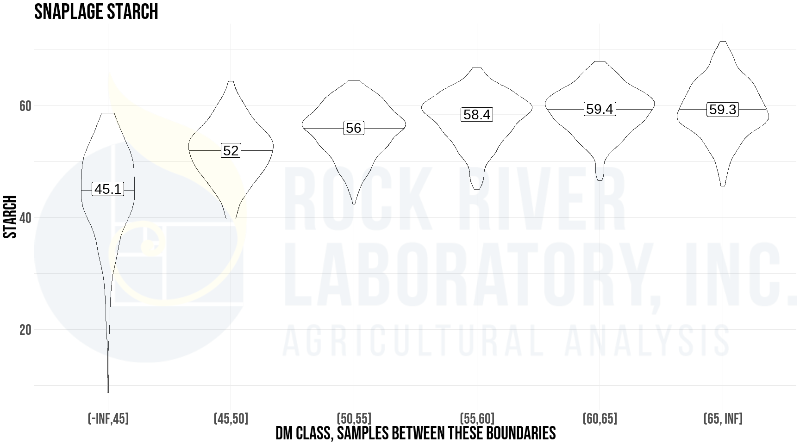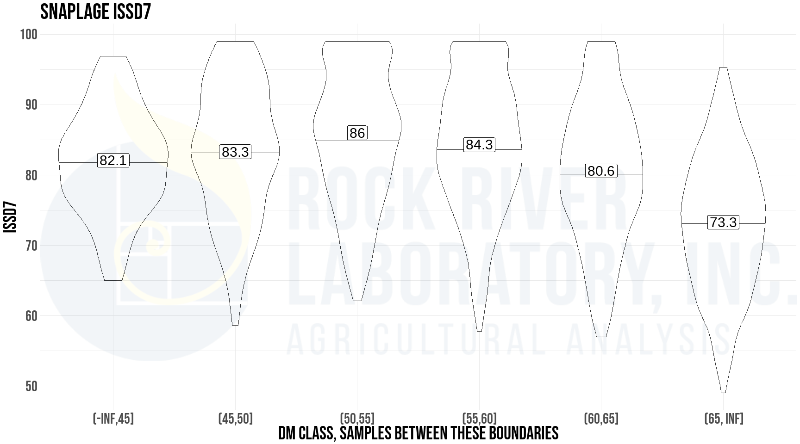By: John Goeser
Snaplage brings several intriguing aspects to dairy or beef producers. The recent uptick in interest ties into the fact that a self-propelled forage harvester fitted with a grain head can be used to make the feed. Keeping the combine off the farm is a strong draw to those that own their forage harvester or need to work with different custom harvest crews to harvest grain relative to corn silage or snaplage. Snaplage brings starch like high moisture shelled corn, but also a bit of fiber like corn silage - it often blurs the lines between grain and silage, and its quality is dramatically affected by harvest timing.
In this year of expensive corn, producers have additional incentive to optimize snaplage quality and dairy or beef performance. Snaplage moisture, kernel maturity and kernel processing are key aspects to snaplage quality that are generally under producers control through harvest timing and managing the processor roll game. Kernel processing score is a useful tool to assess kernel breakage with corn silage and snaplage, with today’s goal being 75 to 80 percent kernel processing score.
For insight into managing harvest timing and snaplage moisture, a better understanding of how moisture relates to both starch content and starch digestibility can help. Starch content increases with advancing corn crop maturity and decreasing kernel moisture content. However, gains in starch must be balanced against decreasing rumen starch digestibility as the grain matures and fermentation potential is lessened with drier feed. This delicate balance holds true for both corn silage and snaplage.
As corn advances toward blacklayer, the grain continues to deposit and accumulate starch content. This is evident in Figure 1, where Rock River Laboratory data details that starch content in snaplage increases up to the point that snaplage reaches about 60 percent dry matter or 40 percent moisture. At this point, the grain has reached black layer and the starch content is determined. Think of black layer like putting the cork in a bottle - nothing more can be added.
Figure 1: Starch content for samples in various dry matter brackets, for commercial feed samples analyzed by Rock River Laboratory, Inc. and labeled as “Snap…”

Beyond starch, one of the real nutrition benefits of snaplage ties into exceptional rumen starch digestibility potential. As mentioned previously, both kernel maturity and adequate moisture interact to affect rumen starch digestibility potential in snaplage. As the grain in snaplage advances to black layer maturity, the starch becomes increasingly harder in the endosperm, and the lesser moisture content in snaplage also renders the chopped material less likely to aggressively ferment in the bag or silo.The relationship between moisture and rumen starch digestibility of snaplage can be visualized in Figure 2.
Figure 2: Rumen starch digestibility, as a percent of starch, for samples in various dry matter brackets, in commercial feed samples analyzed by Rock River Laboratory, Inc. and labeled as “Snap…”

In Figure 2, it’s apparent that rumen starch digestibility drops off as snaplage eclipses 60 percent dry matter, or less than 40 percent moisture, and the optimal starch digestibility for snaplage appears to be around 45 percent moisture. Tying this observation back into the starch content observations from Figure 1, roughly 45 percent moisture is also the point at which snaplage appears to reach maximum starch content. Monitor moisture and kernel maturity to balance starch content and digestibility in your snaplage. Harvesting snaplage between 40 and 50 percent moisture appears to be the sweet spot to optimize snaplage starch content and digestibility.
I also recommend preserving high-quality feed with a research-backed bacterial inoculant or chemical-based preservative to ensure this valuable crop maintains optimum feeding value through to feed-out. Corn silage, snaplage, and high moisture corn are also prone to yeast growth, heating, and aerobic instability issues, so a snaplage preservation strategy that enhances aerobic stability upon feed-out is a great idea.With corn grain prices in excess of $5.00 per bushel, reviewing such data observations and planning with an agronomist, nutritionist, and harvesting crew can put any farm in the position to succeed with this popular feed.

